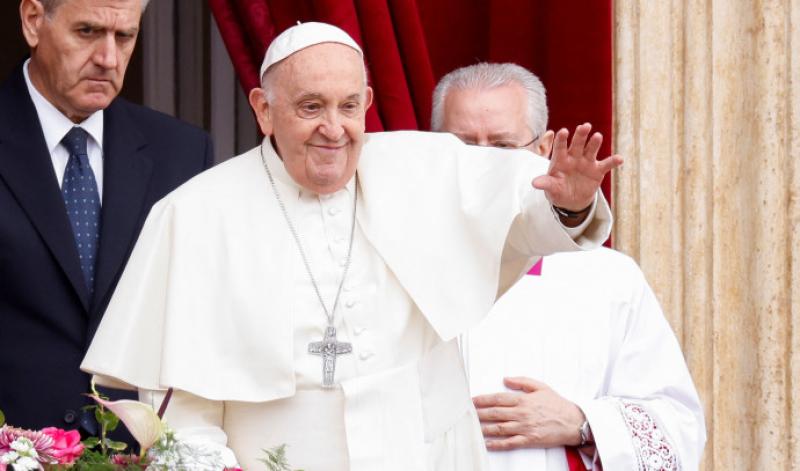Vatican tightens rules on supernatural phenomena
Category: News & Politics
Via: krishna • 10 months ago • 5 commentsBy: By Mark Lowen, BBC Rome Correspondent • Cat McGowan, BBC News

Pope Francis gestures from a balcony at St. Peter's Square, on Easter Sunday, at the Vatican March 31, 2024. (photo credit: REUTERS)

When are reports of a weeping statue fake news? How credible is the claim that a holy relic led to a miraculous healing? And how should a divine apparition be confirmed?
These are the themes addressed in the Vatican's new guidelines on supernatural phenomena, which urge the Catholic church to take a more cautious approach.
The document, compiled by the Vatican's Dicastery for the Doctrine of the Faith, lays out stricter rules to assess the truthfulness of such claims.
The new guidance was presented at a media briefing on Friday and replaces rulings last set out in 1978.
The document recommends incidents of phenomena should be carefully assessed, to make sure that they are not fraudulent or an attempt to make money.
The paper warns against creating "damage to the unity of the Church" and serious errors that could "cause scandals and undermine the credibility of the Church".
Reports of such phenomena are said to have soared in recent years in an era of social media - sometimes spread through disinformation and rumour.
The new guidelines say that as a rule, bishops should issue a "nihil obstat" - or no obstacle - in such cases. This means that the incident would not be formally recognised as supernatural but that there would be no barrier to worship. Supernatural recognition by the Vatican is rare.
The document goes on to say that five other decisions can also be issued by bishops, including rejecting the event as supernatural altogether or even banning the worship of some phenomena.
Under the new rules, Vatican approval should always be sought by bishops before any conclusions are published, with the Pope able to intervene in exceptional cases.
Apparitions have been reported across the centuries. Those recognised by the Church have prompted pilgrims, and popes, to visit spots where they are said to have taken place.
Millions flock to Lourdes in France, for example, or Fatima in Portugal, where the Virgin Mary is alleged to have appeared to children, promising a miracle - after which crowds are said to have witnessed the sun zig-zagging through the sky.
The visitation was officially recognised by the Church in 1930.
But other reports have been found by church officials to be baloney. In 2016, an Italian woman began claiming regular apparitions of Jesus and Mary in a small town north of Rome after she brought back a statue from Medjugorje in Bosnia, where the Virgin Mary is also said to have appeared.
Anyone found to be violating the CoC may be excommunicated from this discussion without warning!




When are reports of a weeping statue fake news? How credible is the claim that a holy relic led to a miraculous healing? And how should a divine apparition be confirmed?
These are the themes addressed in the Vatican's new guidelines on supernatural phenomena, which urge the Catholic church to take a more cautious approach.
The document, compiled by the Vatican's Dicastery for the Doctrine of the Faith, lays out stricter rules to assess the truthfulness of such claims.
The paper warns against creating "damage to the unity of the Church" and serious errors that could "cause scandals and undermine the credibility of the Church".
Reports of such phenomena are said to have soared in recent years in an era of social media - sometimes spread through disinformation and rumour.
Under the new rules, Vatican approval should always be sought by bishops before any conclusions are published, with the Pope able to intervene in exceptional cases.
Apparitions have been reported across the centuries. Those recognised by the Church have prompted pilgrims, and popes, to visit spots where they are said to have taken place.
Millions flock to Lourdes in France, for example, or Fatima in Portugal, where the Virgin Mary is alleged to have appeared to children, promising a miracle - after which crowds are said to have witnessed the sun zig-zagging through the sky.
The visitation was officially recognised by the Church in 1930.
But other reports have been found by church officials to be baloney.
No comment yet.
Don't people care about what the Vatican's position on Supernatural phenomena is?
(I am shocked-- shocked I tell you!)
Is he a Neo-Liberal?
(Or does he just play one on TV?)